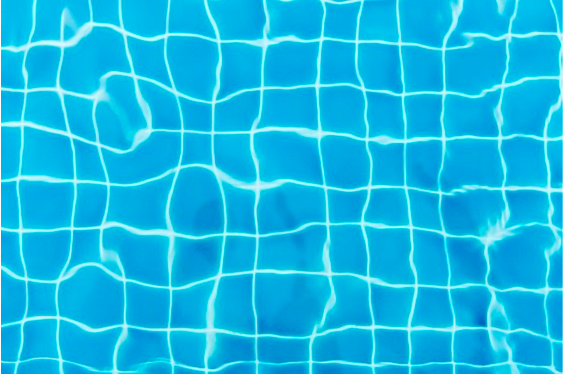
Vinyl pool liners are affordable and offer good durability, quick installation and a number of customization options. These are just some of the reasons why we frequently recommend these types of pools to our customers. However, vinyl pool liners are not without their problems. Fortunately, many of these issues can be corrected by knowing a few tips and tricks.
Here are four common vinyl liner pool problems that you may run into, along with their solutions.
1. Low Life Expectancy
The average vinyl pool liner lasts for around 10 years, and a replacement will run you between $3,000 and $5,000. Obviously, extending its lifespan is a concern for most pool owners. Thankfully, there are ways to prolong your pool liner’s lifespan and get more use out of it.
- Make sure qualified pool contractors install your liner
- Maintain proper pH and chlorine levels
- Maintain proper water levels
- Clean out branches and twigs
- Never drain your pool completely
- Patch tears quickly
2. Wrinkles
The most common reason why vinyl liners get wrinkles is because there’s too much water in the soil around the pool. Having a high water table can lift the floor of the pool, much like air does to a balloon. Then when the water goes back down, the liner doesn’t automatically stretch back into position. It ends up with wrinkles. It’s possible that incorrect water chemistry can cause this problem, too.
Hiring experienced pool contractors in Jackson ensures your liner is installed correctly. If you notice any wrinkles during the construction phase, let the builder know. You can also consider installing a dewatering system around the pool to lower groundwater levels. Also, make sure you maintain proper water chemistry.
3. Discoloration at the Water Line
No matter how well you take care of your swimming pool, the area around the water line will begin to discolor and deteriorate. As micro-organisms feed, they secrete dyes that are often responsible for staining and discoloration.
Thankfully, they do not affect the integrity of the vinyl. The easiest solution to this problem is to install a tile pool border. Tile is available in numerous colors, designs and patterns, enhancing the look of the pool and preventing staining.
4. Slippery
When first installing a new pool liner, you can expect it to be slippery. It’s made from PVC, which contains additives to make the material more flexible and easier to install. These additives can sit on the surface and make the pool liner feel slippery. Luckily, this is only temporary and the additives will wear off in about 6-12 weeks.
If your pool isn’t new, it could be algae buildup causing the slipperiness. Algae isn’t always visible to the naked eye, so just because you can’t see it doesn’t mean it’s not there! If this is the case, check your chemical balance and make sure they’re balanced.
Also, we recommend talking to your pool contractor about installing a textured surface on stairs and benches. This will give these accident-prone areas more traction and reduce the risk for slips and falls.
Learn More About Vinyl Pool Liners
If you’re looking for a budget-friendly pool option, a vinyl liner is an excellent choice. With the proper care, it’s durable, long lasting and economical. And by knowing how to fix these common issues, you’ll be able to enjoy your swimming pool even more!

 CALL US TODAY!
CALL US TODAY!
 Are you considering surprising your family with a brand new swimming pool? There is a lot of information online about vinyl liner pools, which is a great thing, but it can also be overwhelming.
Are you considering surprising your family with a brand new swimming pool? There is a lot of information online about vinyl liner pools, which is a great thing, but it can also be overwhelming. 


